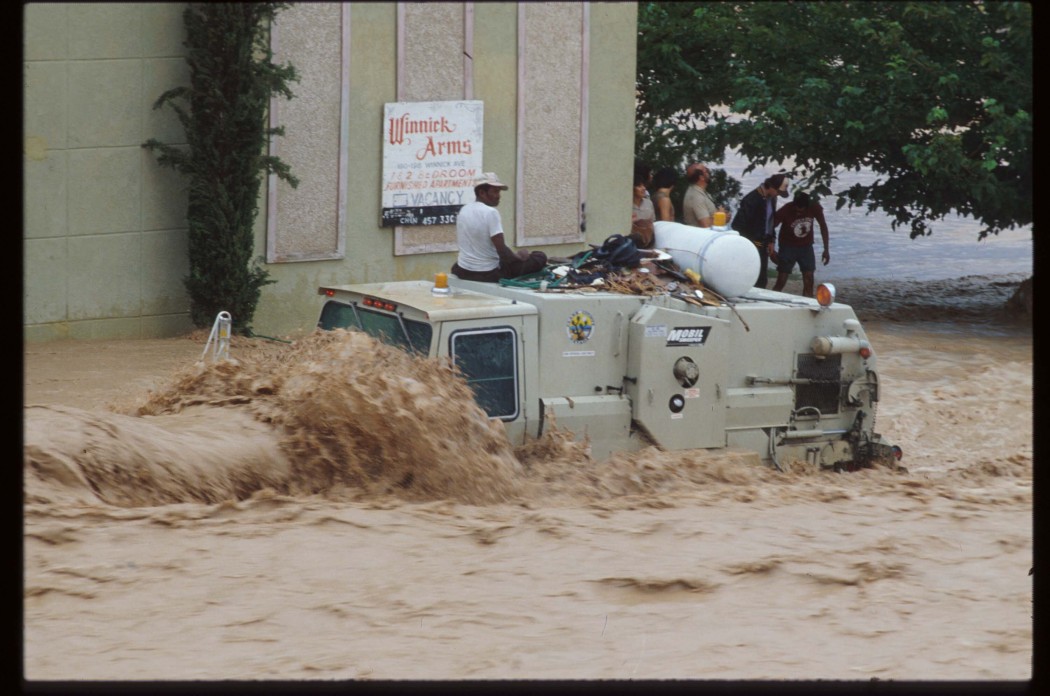
Heavy Rain, Flooding, and Chance of Severe Weather Staring Down the Southern U.S.
January 22, 2024
Posted: August 3, 2022 10:55 am





Getty Images/Hulton Archive via Getty Images
Las Vegas was woefully unprepared for dealing with torrential rain on July 28, 2022, and the disaster turned the neon-lift streets into raging rivers. Flash floods affected most areas, and casinos dealt with roof leaks and flooding at several iconic showplaces. One visitor produced a photo of water cascading from the ceiling of Caesar’s Palace.
A major hole developed in the ceiling of Planet Hollywood Casino on the famed strip. Many residents and visitors found themselves stranded and left trying to find shelter. The storms and strong winds devastated the city and much of the Southwest.
Wind gusts of up to 70 miles per hour produced near-hurricane-strength winds in this desert environment. The rain might not seem excessive at 0.5 to 0.75 of an inch reported in most areas, but heavy rain in a desert can generate cataclysmic results.

It doesn’t take much rain to cause flash flooding in drought-stricken areas of the West. That’s especially true when rainfall falls at the rate of 0.29 inches in less than an hour. In Las Vegas the sudden downpour brought traffic to a halt as vehicles became stranded by the rushing rivers that replace roadways across the region.
Nevada wasn’t the only state to experience disaster scenarios. Extreme Meteorologist Reed Timmer recorded video in Rimrock, Arizona, of 2 inches of rain pouring down on previously dry landscape. The footage demonstrated the devastating power of rolling floodwaters carrying away debris. The roar of the rushing waters could also be heard in the footage.
Climate change affects every region of the planet because weather is highly susceptible to small changes in patterns. Global warming doesn’t just create hot desert conditions; it also increases the air’s ability to hold moisture for a short time.
That results in heavier rainfall levels in all regions of the earth including desert areas. Evidence of this tendency includes the 2015 unexpected floral blooms that swept across Death Valley and the Atacama Chilean deserts in 2015. Sudden rainfalls brought life to these deserts, but the blooms didn’t last.
Global warming produces unexpected results rather than just making deserts drier and hotter. For example, dried-up Lake Eyre in Australia received 7 to 8 inches of rain, which filled up the lake and made it the largest on the continent. The rainfall also caused out-of-control growth of bushes, shrubbery and vegetation.
Unfortunately, the history of hotter, drier weather in the Las Vegas area turns desert soil as hard as concrete. Rainfall can reach its yearly average in just a few rainy days, and late July and August serve as the heart of monsoon season.
This Las Vegas flood happened during the height of monsoon season. Sometimes desert areas in the Southwest can see all of their annual rain in just a few days. The dry soil channels water into flash floods instead of soaking into the ground as needed.
Dried out roofing materials crack and spring leaks in torrential rain, and Las Vegas motorists faced incredibly dangerous flooding situations. Debris from damaged buildings increases the dangers of flash floods proportionately.
During the July 28 flood, casino roofs developed leaks, people’s cars were stranded and emergency services were overwhelmed with 330 calls for services related to the storm. Official records of rainfall at Harry Reid International Airport recorded 0.32 of an inch of rain, which is about the normal rainfall for the entire month of July. Seven people needed to be rescued from dangerous moving water threats.
This time of year, the weather pattern of the Southwest includes the heaviest rains of the year. Known as the North American Monsoon Season, the rainfall is much anticipated because it’s desperately needed to relieve the parched region and replenish water supplies and ground moisture. Unfortunately, that can be a double-edged sword when thunderstorms dump a month’s rain in a few hours.
The water is needed to replenish Lake Mead, which is gradually drying up to less than 30% of full capacity. The weather is expected to settle in August to the normal dry conditions, but that’s an entirely different aspect of global warming challenges.
Climate change modeling predicts long-term increased temperatures in the region and increased rainfall based on similar torrential rain episodes through the end of the century. Rainfall can generate major changes like soil erosion that affects the infrastructure for transportation. Changes in the desert’s climate can generate unexpected needs for repairs of roads and transportation infrastructure.
Las Vegas and Reno rank among the fastest warming cities in the United States. Las Vegas ranks first as the average temperature has increased nearly 6 degrees since 1970. The warming trend affects water resources and animal and plant life while increasing the threat of uncontrolled wildfires.
Las Vegas serves to illustrate the threats inherent in climate change for the rest of the country. One authoritative report created in November of 2018 stated that if climate changes weren’t rapidly addressed, changing climate conditions could easily cause the death of thousands of U.S. citizens and visitors to Sin City while massively disrupting local tourism and even the nation’s economic health.
Did you find this content useful? Feel free to bookmark or to post to your timeline for reference later.

January 21, 2024

January 19, 2024

January 18, 2024